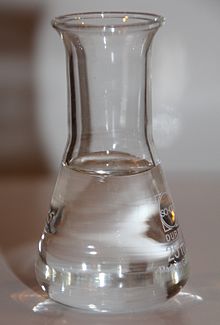What is Glycerine & why is it used?
Benefits of Glycerine for Skin
Glycerine is a highly versatile ingredient that provides numerous benefits for the skin. Its moisturizing properties help to hydrate and soften the skin, making it a popular choice in many cosmetic products. Glycerine also acts as a humectant, drawing water from the air into the skin and protecting against dryness.
Glycerine in Family Bug Spray
When used as an inactive ingredient in a safe family bug spray, glycerine can provide an added benefit of nourishing and protecting the skin from potential irritants. This makes it an excellent choice for those looking for a safe and effective pest repellent solution.
Minimum Risk Ingredient
Glycerine is considered a “minimum risk” ingredient by the EPA. This means that it is exempt from registration under FIFRA when used in pesticide products that meet certain criteria for exemption. Its minimum risk classification makes it a highly trusted ingredient for use in products designed to protect against pests.
Glycerine is Effective
Glycerine is a safe and highly beneficial ingredient for the skin. Its ability to retain moisture and its minimum risk classification by the EPA make it an excellent addition to any family bug spray. By nourishing and protecting the skin from potential irritants, glycerine can provide an effective solution for repelling pests while also keeping the skin healthy and hydrated.
Is Glycerine Natural?
Glycerine can be either natural or synthetic, depending on how it is produced.
Natural glycerine, also known as vegetable glycerine, is a byproduct of the soap-making process and is derived from plant-based oils such as coconut, palm, or soy. It can also be obtained from animal fats, such as tallow or lard.
Synthetic glycerine, also known as synthetic glycerol, is made through a chemical process known as hydrolysis, which involves breaking down fats and oils into their component parts. This process can use a variety of starting materials, including petrochemicals.
It’s worth noting that not all glycerine is created equal. Natural glycerine is typically considered more desirable for use in cosmetic and personal care products because it is seen as a more sustainable and eco-friendly option. Additionally, natural glycerine is considered to have a higher quality and purity than synthetic glycerine.
Synthetic glycerine is a Petroleum-based product, some people may find them unappealing due to their association with crude oil, a non-renewable resource, and the potential risks associated with long-term use.
Natural Glycerine Production
The good stuff- Plant-based oils (e.g. coconut, palm, soy) are combined with an alkaline substance (e.g. lye) and heated.
- The alkaline substance breaks down the oils into their component parts: fatty acids and glycerol.
- The glycerol is then separated from the fatty acids through a process called saponification.
- The resulting glycerol is purified and distilled to remove impurities, resulting in natural glycerine.
Synthetic Glycerine Production
The fake stuff- Propylene, a petroleum-based compound, is reacted with chlorine to form epichlorohydrin.
- Epichlorohydrin is then hydrolyzed in the presence of an alkaline substance (e.g. sodium hydroxide) to produce glycerol
- The resulting glycerol is purified and distilled to remove impurities, resulting in synthetic glycerine.
What does Glycerine look like?

What are the benefits of using Natural glycerine?
-
Sustainable: Natural glycerine is derived from plant-based oils, such as coconut, palm, or soybean oil. This makes it a sustainable and eco-friendly ingredient compared to synthetic glycerine, which is derived from petroleum-based compounds.
-
Safe and non-toxic: Natural glycerine is considered safe and non-toxic for human use. It is also non-irritating and non-sensitizing, which makes it suitable for use in skincare and cosmetic products.
-
Hydrating: Natural glycerine has moisturizing properties that help to hydrate and soften the skin. It is a humectant, which means it draws moisture from the air into the skin, helping to prevent dryness and flakiness.
-
Nourishing: Natural glycerine contains fatty acids that provide nourishment to the skin. It helps to maintain the skin’s natural barrier, protecting it from environmental stressors and irritants.
-
Versatile: Natural glycerine can be used in a wide range of applications, including in skincare and cosmetic products, as a sweetener in food products, and as a solvent in pharmaceuticals.
Natural glycerine is a safe, versatile & sustainable ingredient
that provides numerous benefits for human use. Its moisturizing and nourishing properties make it a popular choice in skincare and cosmetic products, while its plant-based origin makes it an eco-friendly alternative to synthetic glycerine.
What are the benefits of using Synthetic glycerine?
- Consistency: Synthetic glycerine is chemically identical to natural glycerine, which means it has a consistent quality and purity. This makes it a reliable ingredient for use in a variety of applications, such as in pharmaceuticals, food, and cosmetics.
- Shelf life: Synthetic glycerine has a longer shelf life compared to natural glycerine. It is less susceptible to oxidation and degradation, which means it can be stored for longer periods without losing its quality.
- Availability: Synthetic glycerine is more widely available compared to natural glycerine. This is because it can be produced on a larger scale and is not limited to the availability of plant-based oils.
- Cost-effective: Synthetic glycerine is generally more cost-effective compared to natural glycerine. This makes it a popular choice for industries where cost is a significant factor.
- Versatility: Synthetic glycerine can be used in a wide range of applications, including as a solvent, humectant, lubricant, and plasticizer.
While synthetic glycerine has several benefits,
it is important to note that it is derived from petroleum-based compounds, which means it is less sustainable and eco-friendly and may pose health risks to users.
Glycerine was discovered by Carl Wilhelm Scheele in 1779
Carl Wilhelm Scheele was a Swedish chemist who lived from 1742 to 1786. He is often referred to as one of the most important chemists of the 18th century due to his contributions to the field of chemistry, including the discovery of several new chemical elements and compounds.
Glycerine was discovered by Carl Wilhelm Scheele while experimenting with olive oil. Scheele was able to isolate glycerine from the fatty acids present in olive oil. He also observed that it had a sweet taste, which is why it is sometimes referred to as glycerol.
While he did not discover any immediate uses for glycerine, his discovery paved the way for future scientists to explore its properties and potential applications. Scheele’s discovery of glycerine was an important milestone in the history of chemistry, and it helped to expand our understanding of the chemical properties of fats and oils.
Timeline of Glycerine usage:
Uses for Glycerine
since 1779- 1779 – Swedish chemist Carl Wilhelm Scheele discovers glycerine while experimenting with olive oil.
- 1800s – Glycerine begins to be produced on an industrial scale as a byproduct of soap-making processes.
- 1846 – Glycerine is first used in the manufacture of dynamite, which had recently been invented by Alfred Nobel.
- Late 1800s – Glycerine is used as a sweetener in foods and as a solvent for medicinal extracts.
- Early 1900s – Glycerine is used in the production of nitroglycerin, which is used as a heart medication to treat angina.
- 1930s – Glycerine is used as a moisturizing agent in cosmetics and personal care products.
- 1940s – Glycerine is used as a substitute for sugar during World War II due to sugar shortages.
- 1960s – Glycerine is used as a plasticizer in the production of vinyl films and coatings.
- 1980s – Glycerine is used as an antifreeze in heating and cooling systems.
- 1990s – Glycerine is used as a humectant in food and beverage products to help retain moisture and improve texture.

References:
- “Sustainability of vegetable glycerin production in the context of bio-based economies.” Renewable and Sustainable Energy Reviews. Volume 56, 2016, Pages 1182-1193.
- “The safety of glycerin as a food additive: A review of the published literature.” Food and Chemical Toxicology. Volume 46, Issue 7, July 2008, Pages 2785-2802.
- “Glycerol and the skin: holistic approach to its origin and functions.” British Journal of Dermatology. Volume 147, Issue 2, August 2002, Pages 71-81.
- “Glycerol: A review of its pharmacology, clinical uses and microbiological effects.” Journal of the European Academy of Dermatology and Venereology. Volume 24, Issue 11, November 2010, Pages 1340-1343.
- “Vegetable Glycerin: A Versatile Ingredient for Personal Care Products.” Cosmetics and Toiletries. Volume 131, Issue 3, March 2016, Pages 48-53.

